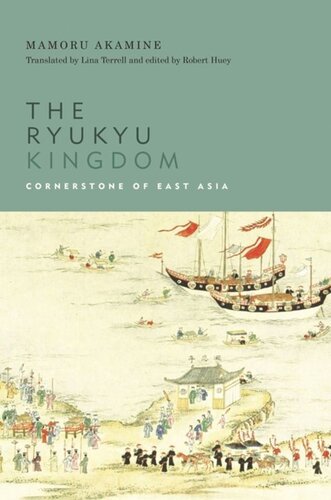

Most ebook files are in PDF format, so you can easily read them using various software such as Foxit Reader or directly on the Google Chrome browser.
Some ebook files are released by publishers in other formats such as .awz, .mobi, .epub, .fb2, etc. You may need to install specific software to read these formats on mobile/PC, such as Calibre.
Please read the tutorial at this link: https://ebookbell.com/faq
We offer FREE conversion to the popular formats you request; however, this may take some time. Therefore, right after payment, please email us, and we will try to provide the service as quickly as possible.
For some exceptional file formats or broken links (if any), please refrain from opening any disputes. Instead, email us first, and we will try to assist within a maximum of 6 hours.
EbookBell Team

4.3
48 reviewsThis English translation of a key work by one of Okinawa’s most respected historians, Mamoru Akamine, provides a compelling new picture of the role played by the Ryukyu Kingdom in the history of East Asia. Okinawa Island, from which the present-day Japanese prefecture derives its name, is the largest of the Ryukyu Islands, an archipelago that stretches between Japan and Taiwan. In the present volume, Akamine chronicles the rise of the Ryukyu Kingdom in the fourteenth and fifteenth centuries, when it played a major part in East Asian trade and diplomacy. Then Ryukyu was indeed the cornerstone in a vibrant East Asian trade sphere centered on Ming China, linking what we now call Japan, Korea, and China to Southeast Asia. With historical and cultural connections to both Japan and China, Ryukyu also mediated diplomatically between the two nations, whose leaders more often than not refused to deal with each other directly. But eventually the kingdom became a victim of its own success. Political developments in China and Japan starting in the sixteenth century brought great changes to the region, and in 1609 Ryukyu was invaded by Satsuma, Japan’s southernmost domain. The China-Japan geopolitical rivalry would in time be acted out within Ryukyu itself, as one faction strove to maintain ties with China while another supported union with rapidly modernizing Japan.
Throughout the work Akamine’s approach to Ryukyu history is distinguished by his expert use of Chinese and Korean sources, which allows him to examine events from several different angles. This contributes to a broad, sweeping narrative, revealing an East Asia made up of many shifting and interrelated parts—not just nation states pursuing their own interests. Akamine’s facility with Chinese texts in particular uncovers telling details that add considerably to the historical record. His meticulous account of one of Ryukyu’s tribute missions to China, for example, or the role of feng shui in the design of Shuri Castle, the royal and administrative center of the kingdom, is detailed without being pedantic. As a result, readers will come away with a broader, more informed understanding of Ryukyu’s significance in the region and the complexity of its relations with its neighbors.